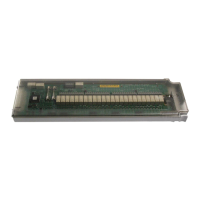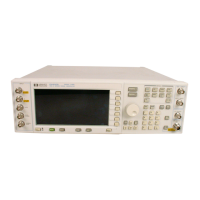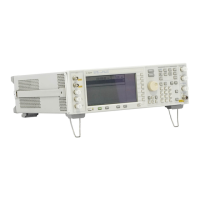1-61
Troubleshooting
Troubleshooting Assembly–Level Problems
1608 VCO Tune Test
• If the +32 V, ±15V, –5.2 V2, and + 5.2V supply voltages are good on the motherboard, use an
oscilloscope to check the 10 MHz signal on the A31 Motherboard at P161 pins 26 and 91. The
signal should have a period of 100 ns with an amplitude greater than 0.4 Vpp.
— If the 10 MHz signal is good, replace the A14 Baseband Generator.
— If the 10 MHz signal is bad, check it at the A7 Reference.
• If the 10 MHz signal is bad at the A7 Reference, refer to A7 Reference troubleshooting.
• If the 10 MHz signal is good at the A7 Reference, replace the A31 Motherboard.
• If the +32 V, ± 15 V, and +5.2 V supply voltages are bad on the motherboard, check the origin of
the supply.
— If the supply voltage is good at the origin, replace the A31 Motherboard.
— If the supply voltage is bad at the origin, troubleshoot the A19 Power Supply.
• If the –5.2 V2 supply voltage is bad on the motherboard, check the -7 V supply voltage at the A19
Power Supply.
— If the -7 V supply voltage is good at the A19 Power Supply, replace the A31 Motherboard.
— If the -7 V supply voltage is bad at the A19 Power Supply, troubleshoot the A19 Power supply.
1609 IQ DAC Output
• Replace the A14 Baseband Generator
1610 PLL Test
• Replace the A14 Baseband Generator

